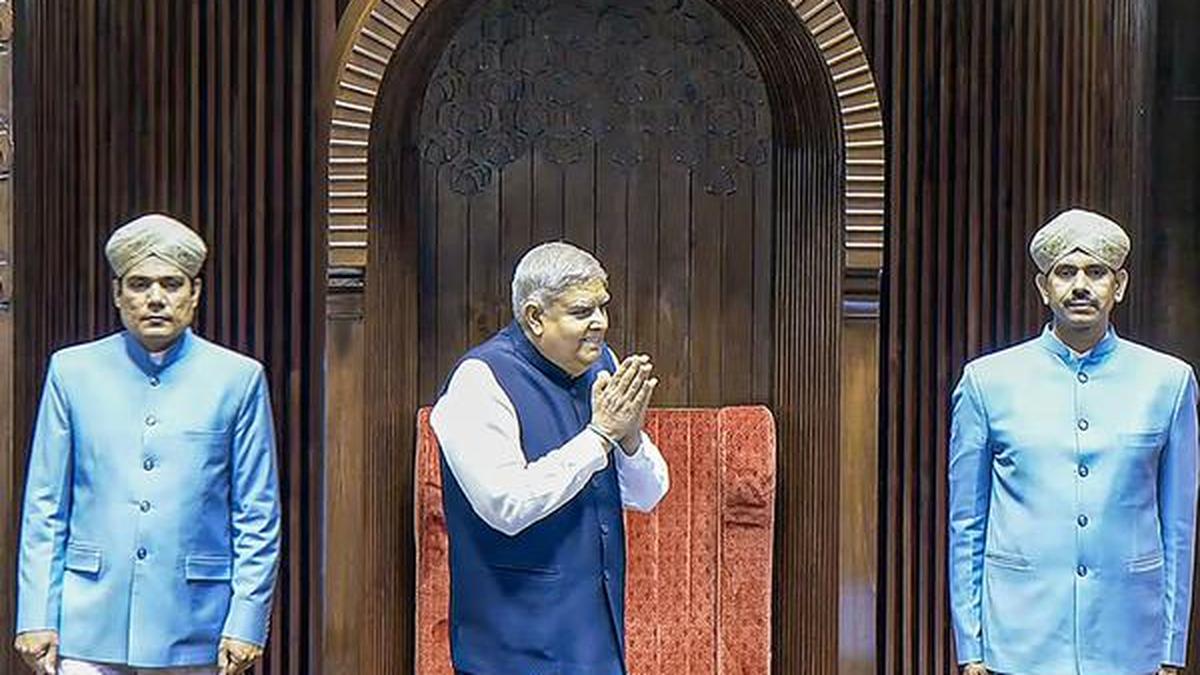What is Article 67(a) of the Indian Constitution invoked by Vice President Jagdeep Dhankhar?

📰 In News (Updated: July 22, 2025, 02:25 PM IST)
As per Article 67 of the Constitution, the Vice-President of India holds office for 5 years from the date of entering office. However, the post can be vacated earlier due to resignation, removal, or death.
- Article 67(a) allows for resignation by writing under his/her hand to the President of India.
- After resignation:
- The office becomes vacant.
- Rajya Sabha, where the VP acts as ex-officio Chairman, is presided over temporarily by the Deputy Chairman.
- The Election Commission of India (ECI) initiates the election process to fill the vacancy as per the Presidential and Vice-Presidential Elections Act, 1952.
🏛️ Vice-President of India – Constitutional Framework
📜 Article 63:
“There shall be a Vice-President of India.”
⚙️ Election of Vice-President (Article 66)
- Not directly elected by citizens.
- Elected by an Electoral Collegeconsisting of:
- Both elected and nominated members of Lok Sabha and Rajya Sabha.
- State Legislative Assembly members are excluded.
✅ Election Method:
- Proportional representation by means of Single Transferable Vote (STV).
- Secret ballot system.
⚖️ Disputes & Validity:
- All doubts and disputes are resolved by the Supreme Court, and its decision is final.
- If the election is declared void, all acts done by the Vice-President prior to that remain valid.
🧾 Qualifications
- Must be a citizen of India.
- Minimum age: 35 years.
- Must qualify for election to the Rajya Sabha.
🗳️ Nomination Requirement
- Must be nominated by 20 electors and seconded by another 20 electors from Parliament.
🏛️ Oath of Office (Article 69)
- Administered by the President or any person appointed by him.
⌛ Term of Office (Article 67)
- 5-year term from the date of entering office.
- Office can fall vacant through resignation (Article 67a), removal, or death.
- If the term is nearing expiry, election must be held before the end of tenure.
❌ Removal Process
- No impeachment process required.
- Can be removed by a resolution passed by:
- Rajya Sabha: Effective Majority (i.e., majority of total membership minus vacancies).
- Lok Sabha: Simple Majority.
- Only Rajya Sabha can introduce the resolution.
- Minimum 14 days' prior notice is mandatory before moving the resolution.
👤 Powers & Functions (Article 64)
- Acts as ex-officio Chairman of the Rajya Sabha.
- Does not vote in regular proceedings, but can cast a deciding vote in case of a tie.
🔖 Additional Note:
- In case of vacancy in the office of the President, the Vice-President discharges the functions of the President (Article 65), but does not assume the full office and does not enjoy executive powers.